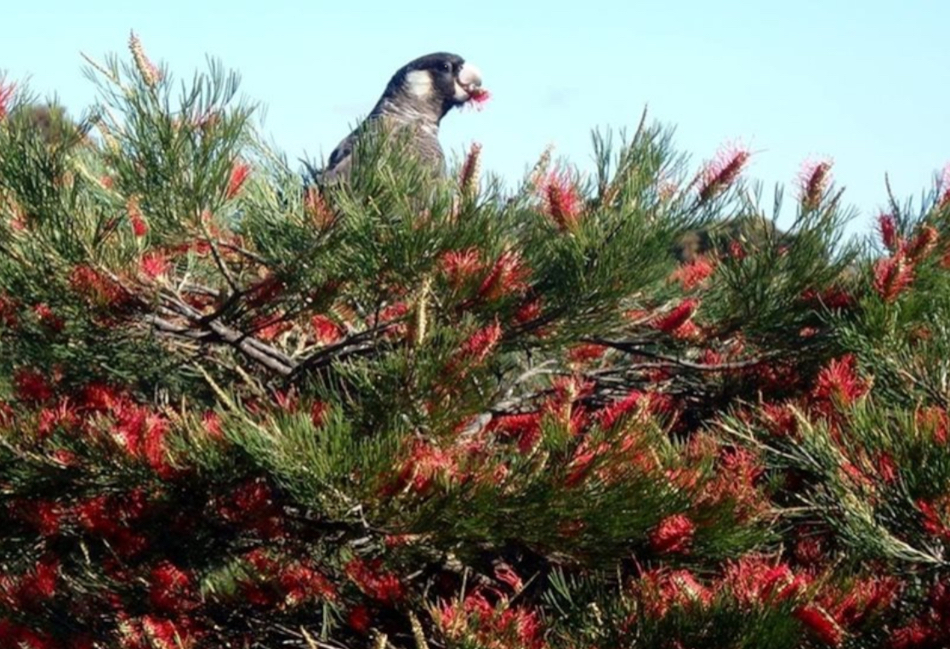To complete his article in the February 7 issue (see previous post), DAVID WAUGH explains some further ground-breaking studies using GPS devices on the black cockatoos
THE second phase of the study examined tail-feather moult in tagged wild black cockatoos. When the tags and tail feathers could be retrieved and it was possible to determine that the feathers had been moulted, researchers worked out the estimated lifespan of the tagged feather.
In captive black cockatoos, the average lifespan of a tail feather was 410 days, which suggested that the feathers do not always moult annually. Tail feathers can moult year-round, but the expectation is that black cockatoos will moult them after the breeding season (July to December for Carnaby’s). The study found that most are dropped from October to April, peaking from December to March. Therefore, the best time to attach tail-mounted tags is at the end of the moulting period, from May to September.
A further successful trial with captive black cockatoos used the tailed-mounted tag plus an extra solar-powered GPS tag attached to the feathers of the back. This allowed it to be shed. (The combination of solar power plus technological miniaturisation meant that the combined weight of the tags still complied with expert recommendations on maximum weight of attachments proportional to body weight.) The GPS tag can provide high-resolution and accurate location estimates. More interesting still was the tri-axial accelerometer in the tag. This records the cockatoo’s movement on three axes: up-down (heave), forward-back (surge) and side-side (sway).
The study developed a software tool which classifies tri-axial accelerometer data. The classifier was developed using data and video footage from tagged captive cockatoos and identified resting, flying and foraging behaviours with 86 per cent accuracy. It was used on the data from released black cockatoos so that researchers could figure out the cockatoos’ behaviour patterns and “activity budgets” remotely, instead of by direct observation. It adds up to a better understanding of the birds’ movements, distribution and habitat use.
Movement data of the sort described in the two parts of this article looks set to improve our knowledge of the ecology of Carnaby’s and other black cockatoos, and to identify their crucial feeding, roosting and breeding habitats. It will inform the initiatives that aim to conserve these threatened species.
David Waugh is a correspondent of the Loro Parque Foundation.
Find more news and articles like this on the Cage & Aviary Birds website. Subscribe to Cage & Aviary Birds magazine now.


